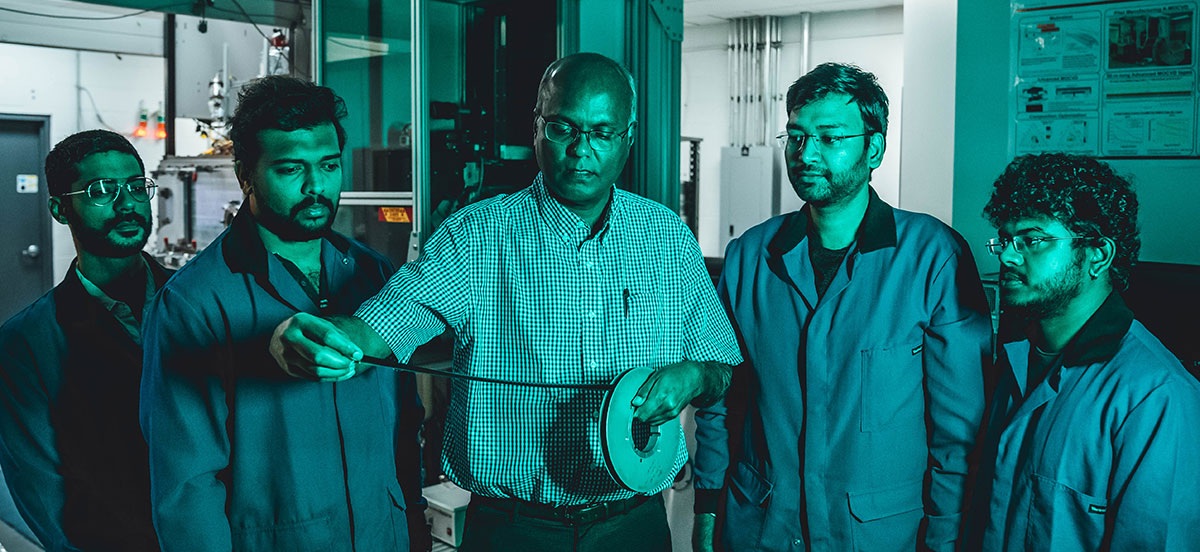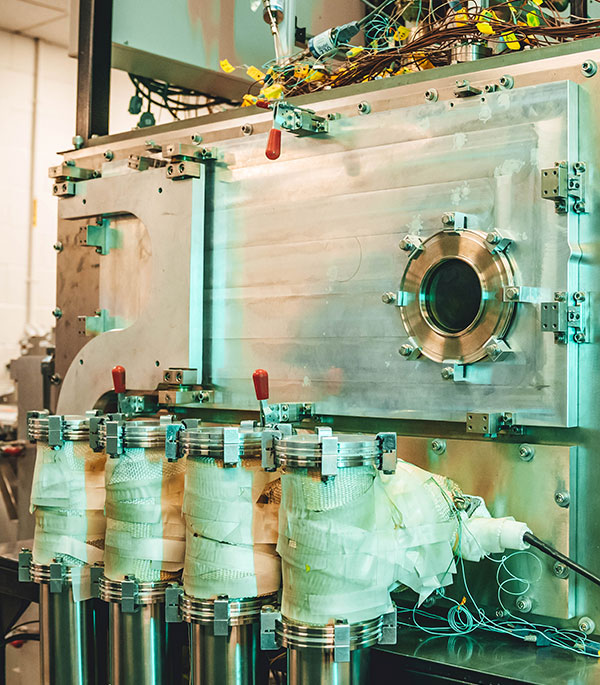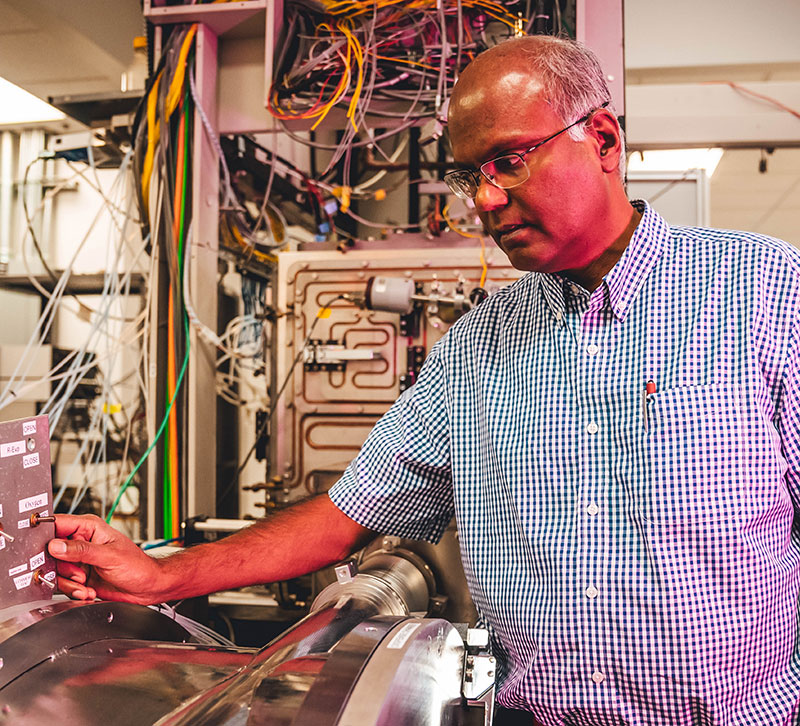Project Wins $2 Million in DOE Funding

Venkat Selvamanickam, head of the Selva Research Group at the University of Houston, is globally renowned for his work with superconductor wires.
|
|
|
|
By Rashda Khan
The U.S. Department of Energy recently announced a $10 million investment in three projects to develop novel technologies to manufacture high-performance superconducting tapes in the United States. Two of the projects are built on the foundations of cutting-edge research from the University of Houston.
The DOE values superconductivity because it means zero wasted electricity. Superconductivity, found only in certain materials, allows direct electric current to be conducted with zero resistance and without energy loss. Widely available low cost, high-temperature superconducting (HTS) tapes are used for a broad range of clean energy applications that move the country closer to a net-zero future, including in transmission cables, the grid, electric-based motors and generators, nuclear fusion reactors, electric aviation and more. However, demand for HTS tapes is outstripping supply, the cost is high, and the bulk of the manufacturing is occurring outside the U.S.
The funding, through the DOE’s Advanced Research Projects Agency-Energy’s (ARPA-E) Novel Superconducting Technologies for Conductors Exploratory Topic, will help boost different types of superconductive technologies.
UH’s Selva Research Group received $2 million for a three-year project, titled “Low-Cost, High-Rate Fabrication of High-Performance, Uniform, Long REBCO Conductors.” Their work focuses on scaling up the manufacture of the team’s high-temperature superconductor tape to implement the technology for clean energy applications. The project will scale up the advanced metal organic chemical vapor deposition (MOCVD) process developed by the team and address key metrics such as speed and cost of production, and uniformity of tape performance.
|
|
Venkat Selvamanickam, M.D. Anderson Chair Professor of Mechanical Engineering and director of the Advanced Manufacturing Institute, is recognized globally for his research to develop better manufacturing technologies for thin film superconductor tape. His team was the first to manufacture the thin film superconductor tape, which was used in 2008 to power 25,000 households in Albany, N.Y., and now is used by more than 200 institutions worldwide.
These awards recognize The relevance and quality of the research at UH and our commitment to making a meaningful impact by aDdressing society’s needs and challenges by transitioning innovations out of research labs and into the real world. Ramanan Krishnamoorti
The Selva Group has demonstrated its HTS tape’s electric current-carrying-performance is three times better than the tapes available on the market. His research group works with many partners to use its HTS tape to make small-scale prototypes of magnets, coils and cables to incorporate in several applications. Now, the team is focusing its attention to make the manufacturing process for its tape more efficient and consistent.
“Even though our superconducting tape is three times better than today’s industry products, for us to be able to take it to full-scale commercialization, we need to produce it faster and at a lower cost while maintaining its high quality,” Selvamanickam said. “This funding is to address this challenge and it’s an important step forward towards commercialization of our technology.”
UH Vice President for Energy and Innovation Ramanan Krishnamoorti is proud of the work happening at UH, a Carnegie-designated Tier One Research University.
“These awards recognize the relevance and quality of the research at UH and our commitment to making a meaningful impact by addressing society’s needs and challenges by transitioning innovations out of research labs and into the real world,” Krishnamoorti said.


